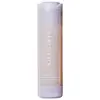What's inside
What's inside
 Key Ingredients
Key Ingredients

 Benefits
Benefits

 Concerns
Concerns

 Ingredients Side-by-side
Ingredients Side-by-side

Glycine Soja Oil
EmollientCetyl Ethylhexanoate
EmollientSorbeth-30 Tetraoleate
EmulsifyingIsododecane
EmollientOlea Europaea Fruit Oil
MaskingCamellia Japonica Seed Oil
EmollientHydrogenated Coconut Oil
EmollientOctyldodecanol
EmollientPolybutene
Caprylic/Capric Triglyceride
MaskingWater
Skin ConditioningTocopherol
AntioxidantSalvia Officinalis Oil
MaskingPanax Ginseng Seed Oil
EmollientArtemisia Vulgaris Oil
PerfumingOcimum Basilicum Oil
MaskingCorylus Avellana Seed Oil
EmollientNigella Sativa Seed Oil
EmollientButylene Glycol
HumectantPanax Ginseng Berry Extract
Skin ConditioningGlycerin
Humectant1,2-Hexanediol
Skin ConditioningMethylpropanediol
SolventPanax Ginseng Root Extract
EmollientEthyl Hexanediol
SolventPanax Ginseng Extract
AntioxidantPanax Ginseng Leaf/Stem Extract
Skin ConditioningEthylhexylglycerin
Skin ConditioningGlycine Soja Oil, Cetyl Ethylhexanoate, Sorbeth-30 Tetraoleate, Isododecane, Olea Europaea Fruit Oil, Camellia Japonica Seed Oil, Hydrogenated Coconut Oil, Octyldodecanol, Polybutene, Caprylic/Capric Triglyceride, Water, Tocopherol, Salvia Officinalis Oil, Panax Ginseng Seed Oil, Artemisia Vulgaris Oil, Ocimum Basilicum Oil, Corylus Avellana Seed Oil, Nigella Sativa Seed Oil, Butylene Glycol, Panax Ginseng Berry Extract, Glycerin, 1,2-Hexanediol, Methylpropanediol, Panax Ginseng Root Extract, Ethyl Hexanediol, Panax Ginseng Extract, Panax Ginseng Leaf/Stem Extract, Ethylhexylglycerin
Helianthus Annuus Seed Oil
EmollientCarthamus Tinctorius Seed Oil
MaskingGlycine Soja Oil
EmollientOctyldodecanol
EmollientButyrospermum Parkii Butter
Skin ConditioningPEG-20 Glyceryl Triisostearate
EmollientBis-Diglyceryl Polyacyladipate-2
EmollientHydrogenated Castor Oil
EmollientTrihydroxystearin
Skin ConditioningDisteardimonium Hectorite
StabilisingAdansonia Digitata Seed Oil
EmollientCitrullus Lanatus Seed Oil
EmollientSambucus Nigra Seed Oil
Cucumis Sativus Seed Oil
EmollientAvena Sativa Kernel Oil
Skin ConditioningTocopherol
AntioxidantRosmarinus Officinalis Leaf Extract
AntimicrobialWater
Skin ConditioningPropylene Carbonate
SolventPhenoxyethanol
PreservativeParfum
MaskingLimonene
PerfumingLinalool
PerfumingHelianthus Annuus Seed Oil, Carthamus Tinctorius Seed Oil, Glycine Soja Oil, Octyldodecanol, Butyrospermum Parkii Butter, PEG-20 Glyceryl Triisostearate, Bis-Diglyceryl Polyacyladipate-2, Hydrogenated Castor Oil, Trihydroxystearin, Disteardimonium Hectorite, Adansonia Digitata Seed Oil, Citrullus Lanatus Seed Oil, Sambucus Nigra Seed Oil, Cucumis Sativus Seed Oil, Avena Sativa Kernel Oil, Tocopherol, Rosmarinus Officinalis Leaf Extract, Water, Propylene Carbonate, Phenoxyethanol, Parfum, Limonene, Linalool
 Reviews
Reviews

Ingredients Explained
These ingredients are found in both products.
Ingredients higher up in an ingredient list are typically present in a larger amount.
Glycine Soja Oil comes from the soybean. Glycine Soja is native to eastern Asia.
Soybean oil is an emollient. It is rich in antioxidants and fatty acids including palmitic, stearic, oleic, and linoleic acids.
As an emollient, the fatty acids in soybean oil helps keep your skin soft and hydrated. It does so by creating a film on top that traps moisture in.
Soybean oil is also rich in vitamin E, a potent antioxidant. Vitamin E is also anti-inflammatory and provides a soothing effect.
Studies show soy may help fade hyperpigmentation from UVB. It does so by disrupting the melanin process from UVB induced skin inflammation.
This ingredient may not be malassezia folliculitis, or fungal-acne, safe.
Soybeans are rich in proteins and are part of the legume family. Foods made with soybeans include tofu, soymilk, edamame, miso, and soy sauce.
Learn more about Glycine Soja OilOctyldodecanol is a fatty alcohol. It is primarily used to enhance the texture of products.
As an emulsifier, Octyldodecanol helps prevent the oils and waters from separating. It also prevents ingredients from creating foam when shaken.
Octyldodecanol is created by reducing fatty acid to an alcohol.
Due to its high molecular weight, it does not get absorbed into the skin.
Learn more about OctyldodecanolTocopherol (also known as Vitamin E) is a common antioxidant used to help protect the skin from free-radicals and strengthen the skin barrier. It's also fat soluble - this means our skin is great at absorbing it.
Vitamin E also helps keep your natural skin lipids healthy. Your lipid skin barrier naturally consists of lipids, ceramides, and fatty acids. Vitamin E offers extra protection for your skin’s lipid barrier, keeping your skin healthy and nourished.
Another benefit is a bit of UV protection. Vitamin E helps reduce the damage caused by UVB rays. (It should not replace your sunscreen). Combining it with Vitamin C can decrease sunburned cells and hyperpigmentation after UV exposure.
You might have noticed Vitamin E + C often paired together. This is because it is great at stabilizing Vitamin C. Using the two together helps increase the effectiveness of both ingredients.
There are often claims that Vitamin E can reduce/prevent scarring, but these claims haven't been confirmed by scientific research.
Learn more about TocopherolWater. It's the most common cosmetic ingredient of all. You'll usually see it at the top of ingredient lists, meaning that it makes up the largest part of the product.
So why is it so popular? Water most often acts as a solvent - this means that it helps dissolve other ingredients into the formulation.
You'll also recognize water as that liquid we all need to stay alive. If you see this, drink a glass of water. Stay hydrated!
Learn more about Water